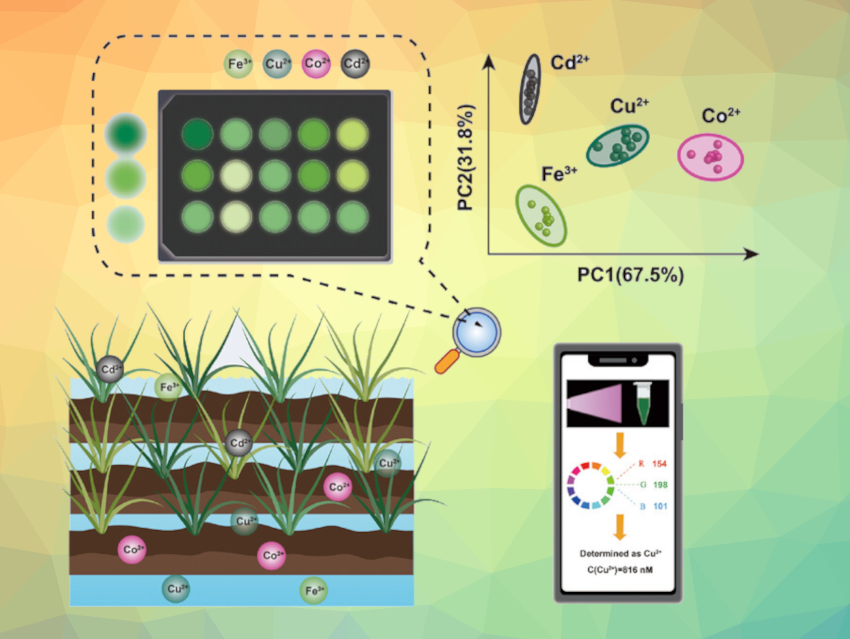Traditional methods for the detection of multiple metal ions such as inductively coupled plasma mass spectrometry (ICP-MS) or atomic fluorescence spectrophotometry rely on complex and expensive instrumentation and generally require skilled operators. New methods for the real-time and low-cost detection of different metal ions in the field would, thus, be useful.
Lei Wang, National Center for Nanoscience and Technology (NCNST), Beijing, China, Yanfei Qi, Jilin University, Changchun, China, and colleagues have developed a bispyrene-based fluorescent sensor array for the detection of multiple metal ions (Fe3+, Cu2+, Co2+ and Cd2+). Pyrene is a typical fluorophore, with advantages such as a high fluorescence quantum yield, long-lived excited states, easy functionalization. The team functionalized their bispyrene derivative, which shows aggregation-induced enhanced emission (AIEE), with carboxyl groups to bind to the different metal ions and modify the compound’s fluorescence signals. This provided a unique “fingerprint” for each metal ion.
Based on the fluorescence response patterns, the four metal ions were accurately identified. The array signals could be extracted using smartphones to realize on-site detection. The researchers successfully used the sensor array for real water, soil, and rat serum samples. Overall, the work provides a rapid, sensitive, low-cost, and on-site detection method for multiple metal ions.
- Rapid and accurate identification of multiple metal ions using a bispyrene‐based fluorescent sensor array with aggregation‐induced enhanced emission property,
Haoran Zheng, Hainan Ma, Haolin Sun, Lina Zhang, Xiaoyu Zhang, Ruimeng Sun, Han Wang, Guo‐Yang Xu, Lei Wang, Yanfei Qi,
Aggregate 2024.
https://doi.org/10.1002/agt2.678




